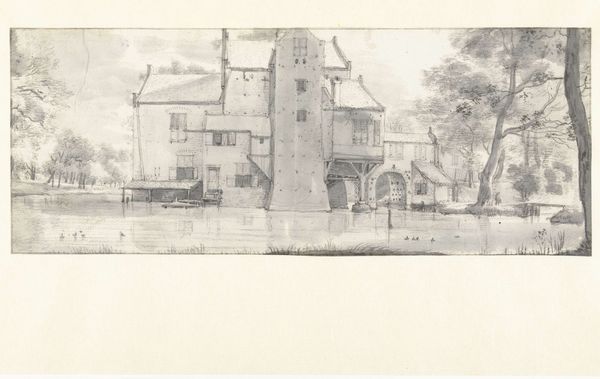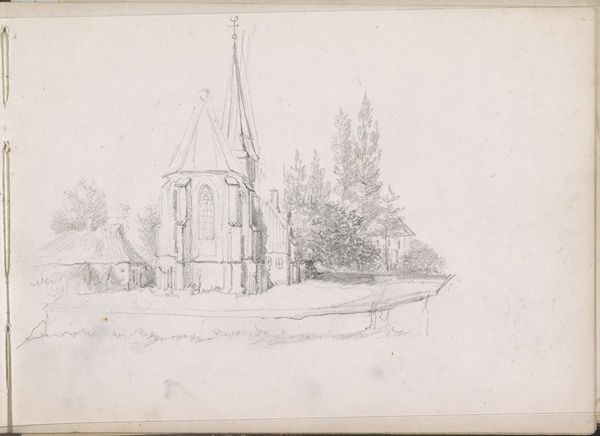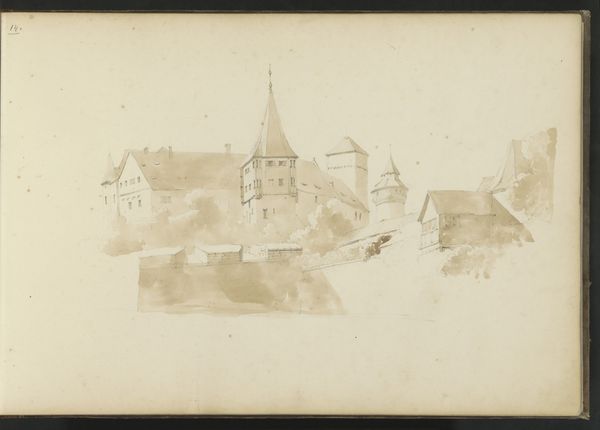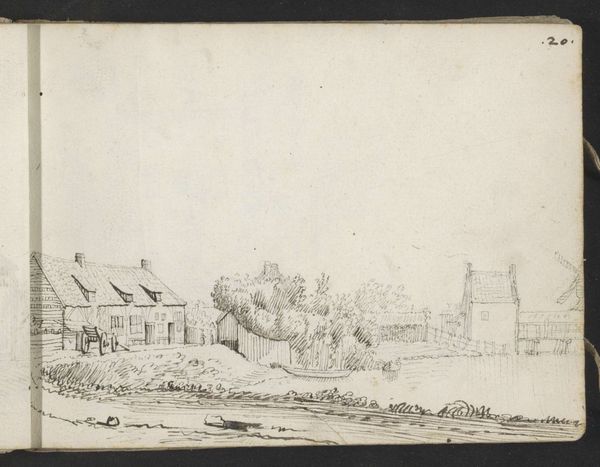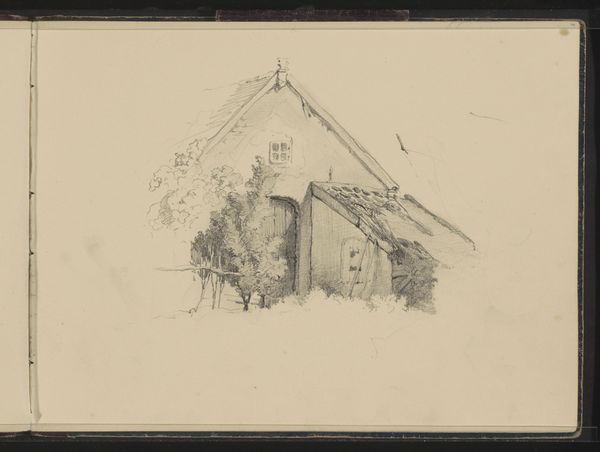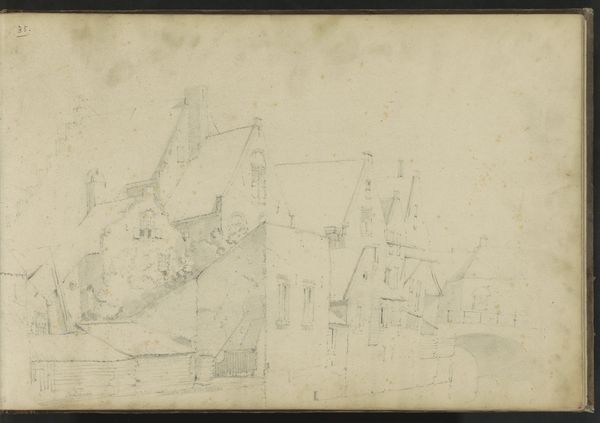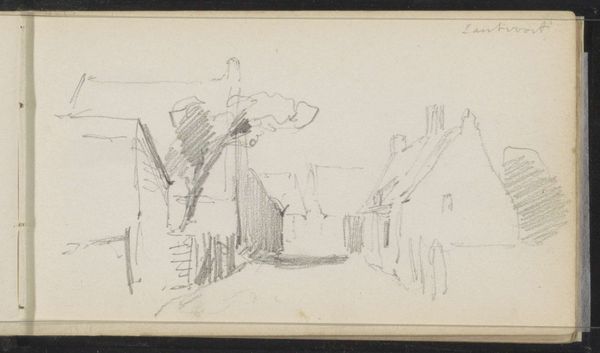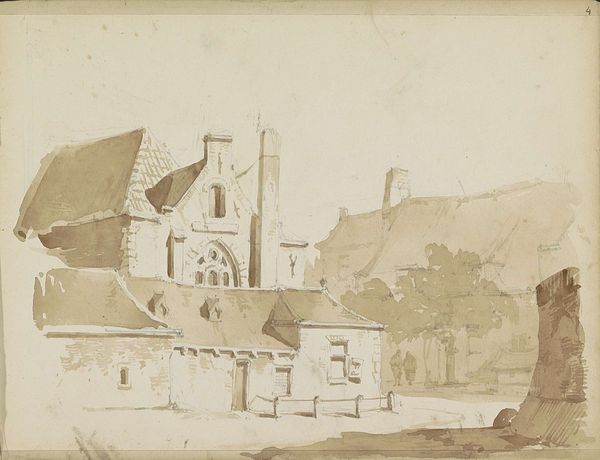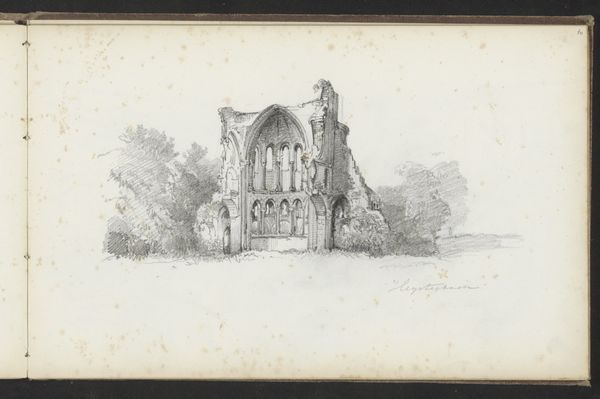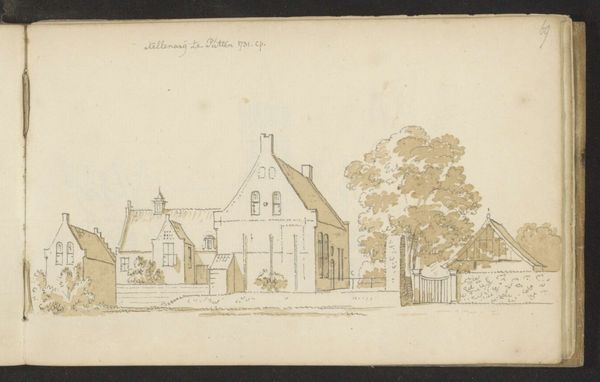
drawing, paper, pencil
#
drawing
#
aged paper
#
toned paper
#
quirky sketch
#
sketch book
#
incomplete sketchy
#
landscape
#
paper
#
personal sketchbook
#
pen-ink sketch
#
pencil
#
pen work
#
sketchbook drawing
#
sketchbook art
#
realism
Copyright: Rijks Museum: Open Domain
Curator: This sketch is titled "Landhuis en een portaal van een huis in Emmerik" by Maria Vos, likely created between 1860 and 1867. It resides in the Rijksmuseum collection. Editor: My first impression is that it’s incredibly understated. Raw, even. You can almost feel the texture of the paper and see the artist's hand at work in those sketchy lines. Curator: Indeed. Vos's approach provides a glimpse into the landscape conventions that existed at the time. One has to wonder about Emmerik during that era and what prompted Vos to document the town’s structures in such a detailed, yet informal manner. What was it about these buildings that appealed to her? Editor: I'm drawn to the process itself. It’s clearly a work executed with pencil and ink on paper, maybe in a sketchbook? There’s an immediacy here. It seems more concerned with the act of observation than perfect representation. How does the materiality impact its message? Was paper a commonplace resource or more a luxury, influencing the accessibility of creating art? Curator: Those are astute observations. The medium and her quick strokes possibly suggest this was done en plein air. Paper wasn’t necessarily a luxury item, but her choice to sketch rather than paint likely allowed greater mobility and speed, suggesting this location may have captured the attention of the art community in the late 1800's and influenced this technique and medium. Editor: I appreciate seeing the artist's initial exploration. Look closely, you can observe how Vos mapped the buildings' features from the architectural details to how they might integrate the structures into the world. The drawing itself is far from flawless, however. Its power rests in this raw authenticity. Curator: Exactly. Vos offers an unvarnished view of the buildings, stripping away any romantic idealization and focusing on their place within the historical, evolving context of Emmerik, a reality often absent in the finished paintings showcased in larger exhibitions of the day. Editor: Yes, I see it less as a picture-postcard version of Emmerik, and more like a record, almost archival. It provides raw materials and hints at how such places developed their character with materiality and structure. Curator: Absolutely. Maria Vos captures a fascinating moment and the value resides in how historical narratives get visualized. Editor: Indeed. This small sketch opens into larger inquiries regarding society, labor and access in artistic practice.
Comments
No comments
Be the first to comment and join the conversation on the ultimate creative platform.

